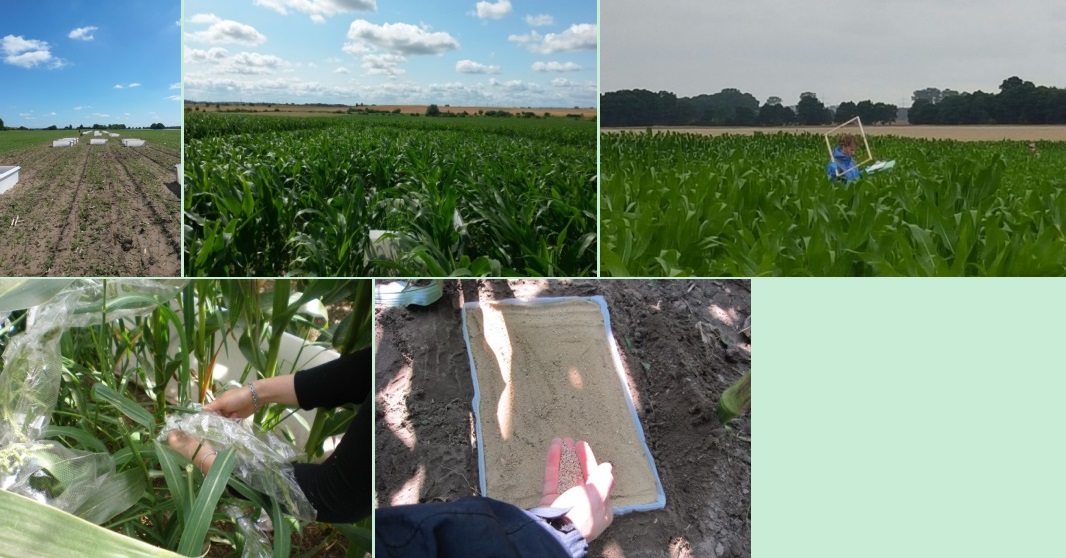The impact of seed predation on weed population dynamics; a modelling approach
I am evaluating the potential of post-dispersal seed predators to control weeds in maize fields in Northern Germany. Therefore, I am quantifying the fate of Echinochloa crus-galli (L.) P.B. in the presence or absence of seed predation.
To do so, I:
1. Conducted an experiment in three maize fields in which I seeded E. crus-galli at different densities and followed the development of the weed population in plots exposed to seed predators and plots from which all seed predators had been excluded. From these observations, I calculated demographic rates (see below).
2. I conducted a seed addition experiment to evaluate the response of seed predators to different densities of weed seeds and used this information as input into the model (see below)
3. Next, I will use the demographic rates from the two experiments described above to parametrized a population model of the weed E. crus-galli that includes all important rates, i.e. seed losses in the seedbank, germination, survival until flowering, seed production, and seed mortality due to predation
4. I will use the model to estimate the importance of weed seed predation as an ecosystem service and tool for biological control by comparing the population growth rates of E. crus-galli with and without seed predation and simulate the consequences of long-term seed predation
BSc and MSc students
Eric Höft - Quantifying the effect of seed predation on the population growth rate of Echinochloa crus-galli
Dennis Conrad - Covercropping in maize and its influence on biological weed control

